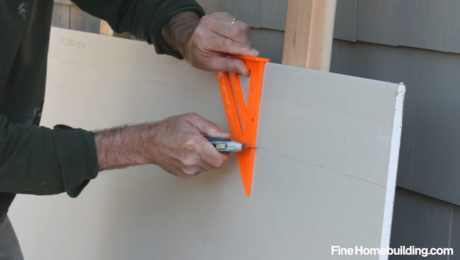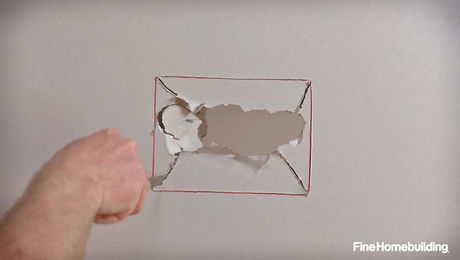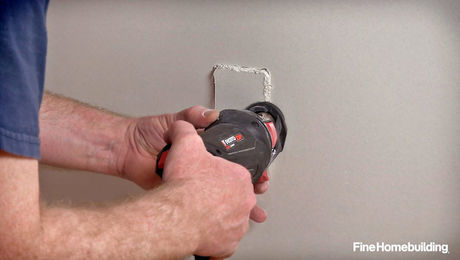
After sanding or sponging off a drywall-compound job, I shine a 500w halogen lamp at an acute angle to highlight any remaining defects. Then I touch up the spots with more compound. But finding those touched-up spots to feather in after the compound has dried is next to impossible.
My simple solution to this problem is to use color-tinted compound for the second application. I add a couple of drops of food coloring to differentiate my batch of touch-up compound. I keep it in a small tub that travels around in the box with my taping knives and hawk. The color doesn’t have to be bright to stand out. I make a pale blend, usually yellow, to contrast with the plain white joint compound.
Mike Guertin, East Greenwich, RI
Edited and Illustrated by Charles Miller
From Fine Homebuilding #166





























View Comments
When I watch the whole process of putting up sheetrock with all the taping, joint compound, patching, various techniques to get the perfect finish, it makes me wonder if it’s all really worth it. With sheetrock, what you get in the end, is just a really boring looking smooth wall. Why isn’t more beadboard used? It comes in 1/2’’ thick x 48 x 96 primed panels and can be nailed direct to the studs. Sure beadboard costs 2 to 3 times as much as sheetrock but you get around all that taping, mudding, etc. and it’s ready to paint right after it goes up. With sheetrock you have to wait for the stuff to dry. For the homeowner who wants to put up mirrors, clocks, pictures, etc., there’s no fiddling around looking for studs.
What’s really a shame to see is when people tear out old knotty pine paneling and replace it with sheetrock. Its not that hard to paint if you sand lightly and prime and the end result is aesthetically far superior to sheetrock.